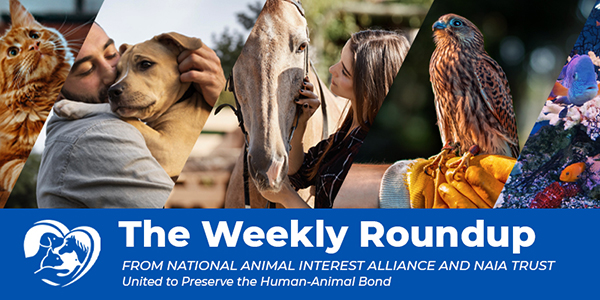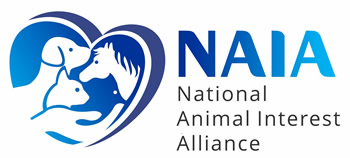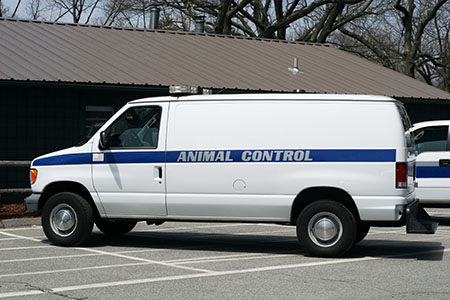
Inside This Issue:
- Avian Flu Vaccine Trial Approved for Dairy Cows
- “Camel Guy” Story Is Actually Pretty Normal – At least by Exotic Animal Trainer Standards
- City Ends 45-Year Contract with Rescue Organization
- Dogs Remember Their Favorite Toys – Sometimes Even By Name!
- News Bites: Sneaky Spiders, Horse Stories, and White Pants
Avian Flu Vaccine Trial Approved for Dairy Cows
The USDA has approved field trials to test vaccines aimed at preventing avian flu (H5N1) in dairy cows. U.S. Secretary of Agriculture Tom Vilsack announced the trials, which are part of efforts to develop a safe and effective vaccine. The USDA’s Center for Veterinary Biologics is overseeing the process and is now accepting submissions for field studies. Conditional licenses for vaccines for lactating dairy cows are being considered based on field efficacy and safety data.
Since March, H5N1 has been detected in over 190 herds across 14 states. The virus’s spread slowed in August, and USDA has been providing financial support for dairy farmers experiencing milk losses due to the virus. Dairy farmers are encouraged to strengthen biosecurity measures on their farms to prevent the spread of H5N1.
The health of dairy cows is of immediate concern. It is crucial for public health, animal welfare, food security, and the economic viability of farms. In simple terms, healthy cows produce more and better milk. The long term concern, of course, is that the H5N1virus will mutate to infect humans and other mammals more easily, which could lead to a nasty pandemic. Influenza viruses are notorius for changing quickly, and are responsible for four major pandemics in the last century. It seems like COVID (a coronavirus, not influenza) was only last week – we'd really like to head off the next pandemic if we can!
USDA approves first H5N1 vaccine trial for dairy cows
“Camel Guy” Story Is Actually Fairly Normal – At least by Exotic Animal Trainer Standards

In some parts of the world, this is a pretty common sight... but definitely not in Dallas, Texas.
Michael Roberts, perhaps better known as the Dallas “Camel Guy,” got his start in exotic animals by working with his camel, Tazah. He became something of a local celebrity when people saw him walking with his camel in Oak Cliff, a neighborhood across the river from downtown. Over time, he developed his skills as a trainer, and today, he trains a diverse array of exotic animals – camels, giraffes, and even zebras!
Many people who get into exotic animal training don’t have the most straightforward path, often stumbling or "failing forward" into it through unexpected experiences and challenges. This story is no exception. Roberts, despite a lifelong love of animals and penchant for catching turtles and lizards as a child, never imagined he would become a professional animal trainer – let alone a specialist in exotic animals. And further, he described himself as “terrified” of camels when he first met them! But despite a somewhat reluctant introduction to exotic animals and camel training, Roberts’ work with Tazah – his very first camel – was considered so effective and natural, he was pretty much told he must become a trainer. None of this would have worked out had Roberts not known the right person and been in the right place at the right time... or met Tazah. As with so many of these stories, you have to wonder – what were the odds?
Exotic animals have a unique effect on the public, often captivating people simply with their presence. The sight of a camel at a car wash or a lemur perched on a trainer’s shoulder brings joy and astonishment to everyday situations, turning mundane moments into extraordinary experiences for passersby. These unexpected delights stir an interest in conservation, biology, husbandry, training, or any number of other “animal endeavors,” drawing new people down their own unconventional paths, and fuels many trainers to continue their work.
The camel walker turned exotic animal whisperer
City Ends 45-Year Contract with Rescue Organization
In Washington, DC, it was announced that the 45-year-old contract between the city and the Humane Rescue Alliance (HRA) will come to an end after this year. HRA isn’t leaving, they will continue to offer adoption and some veterinary services, but the city is taking over animal control programs. This means the city will handle wild animals, stray and dangerous dogs, impounded animals, as well as testing and quarantining animals that may be rabid. In other words, the city will be doing a lot of the public health and safety work that is necessary, but not always the most popular.
Despite the increased role of the city, HRA says it will continue its work in anti-cruelty investigations and humane law enforcement duties. This is a disappointment, as we wish the city would have taken over these tasks as well. It’s worth noting that these changes come directly on the heels of organized complaints against the HRA alleging unsanitary, inhumane, and inconsistent animal policies at its shelters, as well as chronic understaffing. Alas, we don’t have a crystal ball to tell you whether the city’s additional roles will prove helpful for animals and/or the public, but we do wish them the best of success in their missions.
D.C.'s split with Humane Rescue Alliance shakes up city animal control
Dogs Remember their Favorite Toys – Sometimes Even By Name!

What's in a name?
You’ve probably heard the story of Chaser, the Border Collie who learned the names of a whopping 1022 toys. Chaser’s owner, a retired psychologist, wanted to see if she could learn the names of more than 200 objects, which was considered a spectacular feat at the time – and boy you couldn’t have picked a better dog for the task. Chaser was a fantastically intelligent and driven working dog, even for a Border Collie. She demanded several hours of “homework” each day, and ultimately drove her owner a little bonkers, leading him to move on to more challenging topics, like grammar.
Chaser was an extreme anomaly. After all, curious, retirement-bored psychologists aren’t paired with brilliant working dogs as a matter of course. But even so, new research suggests that our dogs are better at remembering the names of objects than we give them credit for. In some cases, they may even remember the names of toys we have forgotten!
In a small study, five dogs learned the names of 12 toys, then had the toys put aside for two years (how many dog years is that?). After the wait was up, these dogs were briefly shown each of their old favorite toys. The old toys were then mixed in with the dog’s current toys in another room, and the dog was asked to specifically retrieve one of their older, named toys. Their success in this was impressive – 44% overall, with two high achieving dogs and four of the five dogs retrieving their correct toy twice as often as you’d expect with random chance!
At five dogs, this is just a tiny experiment, but the results are promising and have big implications for our understanding of the evolution of language. Also, the authors of the study couldn’t help but notice that the dogs with more interactive and engaged owners tended to – much like Chaser – possess a greater “gift” of recall. Whatever else we take away from this research, this observation really speaks to the effect of not just spending time with our dogs, but actively working with them.
Dogs can remember names of toys years after not seeing them, study shows
News Bites: Sneaky Spiders, Horse Stories, and White Pants

Turns out some of the earliest "domesticated" horses were the ancestors of Przewalski’s horse – a horse that has never been domesticated.
For most of us, dogs are the first animal that comes to mind when we think of domestication. But while dogs may be “man’s best friend,” horses have actually played a larger role in shaping human civilization. But how, when, and where were horses first domesticated? This is a vexing question, and as this Washington Post piece explains, we have reached that tantalizing point where we don’t have a definitive answer, but we do have enough data to know that a lot of our hypotheses have been wrong! Whatever the answer is, anything that lets us work with and study horses counts as a win in our book.
In Wuhan Province, China, scientists observed that orb-weaver spiders were taking an awful long time before eating the male fireflies captured in their webs. Further, these ensnared males were flashing female mating patterns each night. Interest piqued, a study of this curious behavior ensued, and it demonstrated what you’d expect: spider webs with female-flashing males captured noticeably more male fireflies. It is suspected that the spider’s venomous bite causes this oddly specific behavior, but more research is required before we understand the mechanisms behind this duplicitous trap. Interestingly, orb-weaver spiders themselves suffer as victims in one of nature's better-known mind-control horror stories: being forced to build its own parasite's "perfect nest" before being unceremoniously eaten and tossed aside.
And finally, if you ever wondered why dairy exhibitors wear white (and who hasn't?), it’s not a clever form of camouflage. There is actually a long tradition behind the uniform. The idea is that plain white ensures more focus on the animals while simultaneously demonstrating the cleanliness of the exhibitor – in other words, if you're an exhibitor and someone takes notice of your pant leg, it’s probably because there’s a stain on ‘it!
Also in the News...
★ Hawaii Supreme Court opens door to aquarium fishing (Aquariums & Courtrooms)
★ Proposed USDA rule defines “unfair” meat industry practice (Corporations & Consolidation; Ranching & Regulations)
★ (Opinion) Fort Collins pet store ban will do more harm than good (Pet Store & Pet Sales Bans)
★ Animal advocates create petition to change city laws regarding stray animals (Stray Animal Ordinances; Public Health & Safety)
★ VPD warns not to approach wild animals after morning bear sighting at old courthouse (Please Don't Feed the Bear)
★ Rogersville woman charged after animals found in deplorable conditions, authorities say (Neglect & Cruelty)
★ "Russian spy" beluga whale that was found dead "had multiple bullet wounds," animal rights group says (Bizarre News; Sorry, Hvaldimir)
★ ‘It’s a mystery’: Investigators search for owners of goats left at KC park (Mystery Grazers)
★ Living Fossils Revealed: The Hidden Evolution of These 4 Ancient Species (Secret Evolution; New on the Inside)
Click here to see what is happening legislatively



